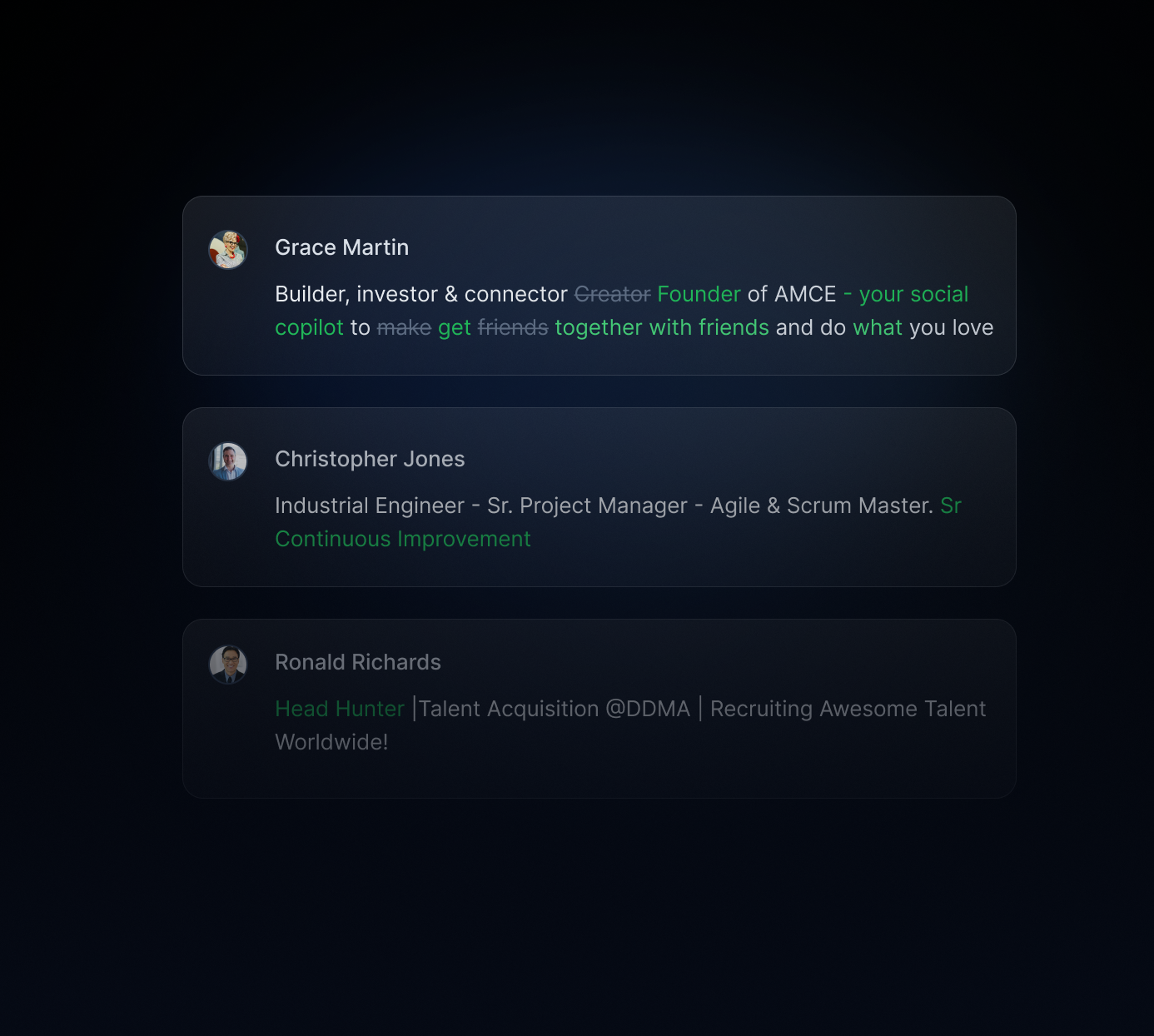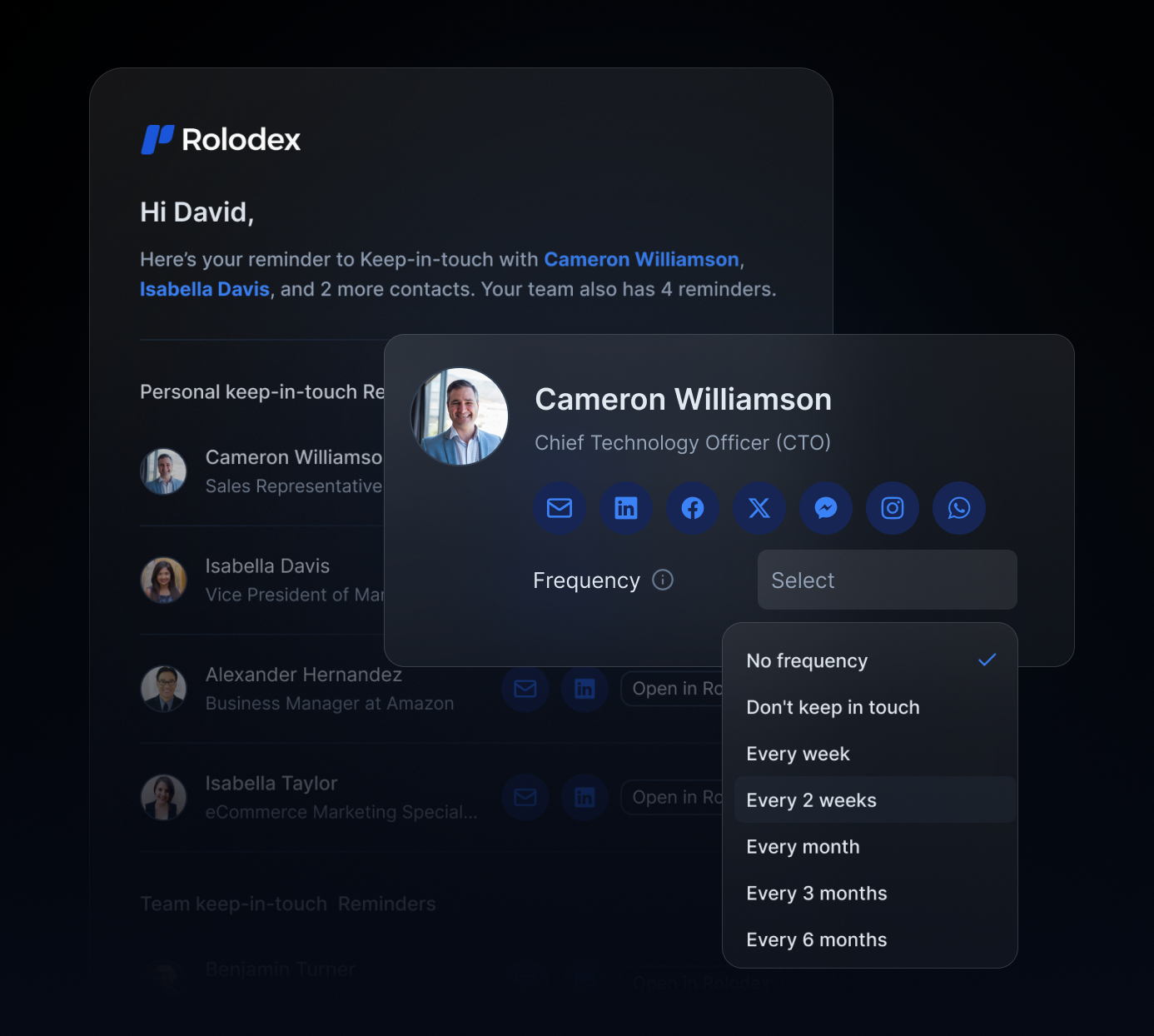In December 2017, the world got a rare peek at David Rockefeller’s private contact system—a five-foot-tall, custom machine stuffed with index cards. Each card held a person; each person held a story: where they met, who introduced whom, what was promised, what to remember next time. Over 50+ years, Rockefeller logged contact information and notes on roughly 100,000 people across ~200,000 cards—a living archive of relationships that powered his work in banking, philanthropy, and diplomacy.
If you’ve ever felt overwhelmed keeping up with a few hundred contacts, his system sounds superhuman. It wasn’t magic. It was meticulous process—and a willingness to invest in relationships long before the payoff. The Wall Street Journal called the file “astonishing,” and Forbes reported the cabinet stood about five feet high, cataloguing a global constellation of leaders, operators, and friends.
Today, the hard part isn’t the cabinet. It’s signal. We swim in email, LinkedIn updates, messages, and meetings—yet the context that made Rockefeller so effective still slips through the cracks. The difference is we no longer need a custom machine and decades of manual updates to get the Rockefeller effect. We can do it—calmly and systematically—in Rolodex.
What Rockefeller Actually Did (and Why It Worked)
Rockefeller didn’t collect business cards. He collected history. After nearly every interaction he’d log where, when, with whom, and what mattered, then reference it before the next touch so each conversation started warm. Former World Bank president James Wolfensohn said the system allowed Rockefeller to “pick up as though he had seen you the week before”—even if years had passed.
A few details underscore the craft:
Volume with memory. Rockefeller’s network was estimated at ~100,000 people, with ~200,000 index cards chronicling meetings, addresses, family details, and milestones.
Consistency. The cards weren’t static. He crossed out outdated facts, appended fresh notes, and added press clippings—updating the file as lives changed. (The archive finding aids describe the cards, revisions, and indexes preserved today.)
Preparation. Before meetings, he scanned relevant cards to re-enter a relationship’s context—names of spouses, last conversation, topics to revisit.
This was the original, analog relationship intelligence: keep trustworthy context, use it to be more human, and let trust compound.
The Rockefeller Effect, Without the Paper Cuts
If Rockefeller were operating today, he wouldn’t build a cabinet. He’d spin up a Rolodex workspace and ask his team to connect email and LinkedIn. In a day, he’d have the bones of what took him decades: a single, shared view of everyone the team knows—and the context to act on it.
Here’s how the same principles translate, step by step.
1) Turn scattered contacts into a shared, searchable graph
Instead of cards, Rolodex pulls in contacts from your email and LinkedIn, then deduplicates them into a single profile per person. Search by name, company, role, seniority, location—then sort by who on your team knows them. You’re not guessing who can open a door; you can see it.
Rockefeller’s card for a head of state listed meetings and intermediaries. Your Rolodex contact shows who on your team has met them, when, and what was said in notes—so you instantly know the warmest path to a conversation.
Want to mimic his geographic dividers? Use filters (city, region) and Map View to visualize where your relationships cluster before a roadshow.

2) Capture the “after” while it’s still fresh
Rockefeller’s superpower was writing things down—immediately. In Rolodex, you open the contact and jot one clean note right after the call: three bullets of truth, decisions, risks, and next steps. If there’s a deck, transcript, or mutual action plan, attach it. Next time anyone opens that contact, the Activity Feed tells the story in order—no spelunking through inboxes.

3) Stay usefully visible with timely nudges
Rockefeller refreshed cards as lives changed. You do it with Title Alerts and Keep-in-Touch:
Title Alerts notify you when someone in your network changes roles. That’s your moment to congratulate them—or suggest a catch-up when the dust settles.

Keep-in-Touch reminders help you set a cadence for key relationships (quarterly for champions, biannual for advisors), so warmth doesn’t decay when calendars get crowded.

4) Systematize warm paths to meetings
Rockefeller’s cards recorded who introduced whom. In Rolodex, you can request warm introductions through the teammate who actually knows the person—then track each ask like a tiny funnel in Boards View: Requested → Intro Sent → Meeting → Outcome. Fast follow-ups and closed-loop “thank yous” stop intros from dying in the gaps.

5) Add light automation (where it helps)
Analog Rockefeller clipped newspapers; you pipe in structured context:
After a Zoom or Meet, use an API to auto-attach the transcript to the contact, so the highlights are searchable five minutes later.
Push in CRM stage changes as notes, so sales and leadership share the same timeline without duplicate updates.
For recruiting, send ATS interview feedback to the contact automatically, so the hiring manager gets the full picture in one place.
A Quick Side-By-Side
Rockefeller’s Method | Your Method in Rolodex |
|---|---|
5-foot cabinet; 200,000 index cards | One shared workspace; unified profiles |
Typed notes + clippings after meetings | Notes & Attachments logged in seconds |
Pre-meeting card review | Open a contact and scan the Activity Feed |
Geographic tabs & cross-references | Filters + Map View for city/region |
Hand-managed follow-up cadence | Keep-in-Touch reminders per person |
Manual updates for promotions, new roles | Title Alerts detect changes automatically |
Introductions recorded on cards | Boards View for intro stages & outcomes |
Decades of consistent, manual work | Hours to set up; minutes to maintain |
The promise isn’t that software replaces care. It’s that software preserves care at team scale—so more people show up informed, and fewer details get dropped.
Final Thought
David Rockefeller proved that relationships are a system—one you can run with care, discipline, and a little help. He needed cabinets, cards, and a small army of updates to keep it alive. You don’t. With Rolodex, the habits that made him legendary are not only possible; they’re practical.
Build your modern rolodex—without the paper cuts.
